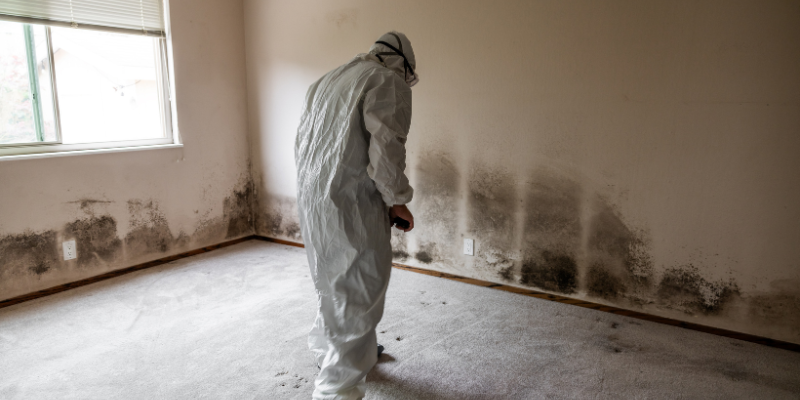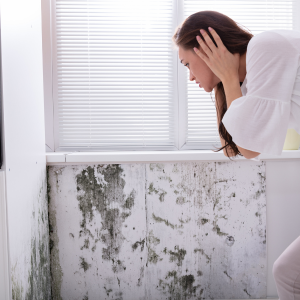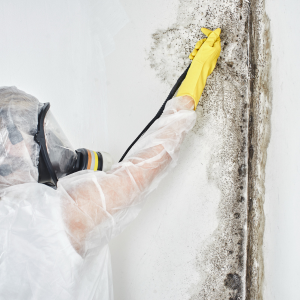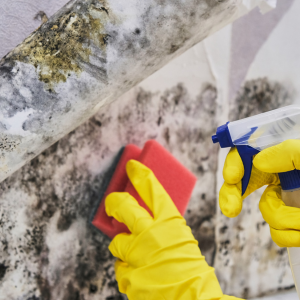
Understanding Mold: Causes, Effects, and Removal Strategies
If you want to sell your Ohio home, you need to know everything about mold. You need to know what it does, how to get rid of it, and what causes it to happen. Mold grows best in warm, damp places that have been damaged by water, don’t get enough air flow, or have issues with the sink or toilet.
Because it can get very humid in Ohio, homes there are more likely to get mold. Mold can make you sick and make your home worth less.
Mold in a house can make breathing hard and damage the building, so most people don’t want to buy it. If your Ohio house has mold, don’t wait to sell it. Do these things right away.
Having a pro look at it is the best way to get rid of the pests and determine the extent of the problem. If you want to get rid of mold, you might need to fix any water sources, clean wells with special products, and replace moldy things like insulation or drywall.
Anyone wanting to buy the house should know what was done to prevent mold from growing. This will help people trust each other and make sure that Ohio’s laws about telling people about the environment are followed.
Identifying Different Types of Household Mold and Their Health Risks
Are you going to Ohio to sell a house that has mold in it? Molds of different kinds can grow in homes and are bad for your health. Molds like “black mold,” Aspergillus, and Cladosporium can make people sick.
If you look in damp places, like bathrooms and basements, you can find Aspergillus. It could make you allergic and make it hard to breathe. This germ can grow and spread if you touch something, whether wet or dry. People with asthma and skin rashes could get worse from this.
Black mold is scary because it has been linked to more serious symptoms, like coughing all the time, being tired, and even having nerve problems. ID needs to be carefully reviewed by experts for it to work. They can see what kinds of mold and how much of it there is.
When buying or selling a house in Ohio, it’s important to follow the laws regarding the property’s condition. Sellers can help protect future occupants by understanding how mold works and ensuring they meet the state’s disclosure requirements. Contact Comfort Living Buys Houses to learn how to stay compliant and create a safer home environment.
Common Misconceptions About Household Mold and Truths You Should Know
Many people in Ohio think it’s almost impossible to sell a house with mold, but this is one of the most common myths about mold in the home. In reality, mold can be a big problem, but it doesn’t mean a house can’t be sold.
To do well in the real estate market, you need to know the truth about mold. People often think of mold as a health risk that makes a home unlivable. However, not all mold is dangerous to your health; some types are harmless and easy to eliminate.
Also, people interested in buying sometimes overestimate how much mold removal will cost and how hard it will be. Sellers should know that Ohio law requires them to tell potential buyers about any mold problems they know about. This can help build trust and openness in the transaction process.
Homeowners can effectively address buyer concerns and make a successful sale even when their property has mold by addressing these myths and taking proactive steps such as professional mold inspection and remediation.
Understanding the Science Behind Mold Growth in Residential Properties

Knowing how mold grows scientifically is important if you want to sell a house in Ohio with mold. Mold grows best in damp places, so it’s common to find it in places that don’t have enough air flow, have water damage, or have leaks.
Mold usually grows in basements, bathrooms, kitchens, and other places where humidity can build up, like homes. Mold spores are very small and can fly through the air. If you don’t treat them immediately, they can spread all over your home.
Being around organic materials like wood and drywall makes them perfect places for mold to grow when water gets into them. The temperature is also important. Molds grow best when the temperature is between 77 and 86 degrees Fahrenheit.
Ohio’s weather can be humid in the summer and wet when it rains, which makes it easy for mold to grow if appropriate steps aren’t taken. If you want to sell a house that has mold in it, you need to know about these things. They will help you find problem areas that need to be fixed and help you talk to potential buyers about the steps taken to fix the mold problems.
How Climate Change Is Affecting the Prevalence of Indoor Molds
The amount of indoor mold in Ohio is changing because of climate change. This is an important thing to think about if you are trying to sell a house that has mold in it. Rising temperatures and higher humidity make it easy for mold to grow, which makes problems for homeowners even worse.
According to changing seasonal rainfall patterns, Ohio is getting heavier rains more often. This lets water into homes and builds up in basements and other weak spots. This constant dampness makes a great environment for many types of mold to grow, including toxic black mold, which can harm people’s health.
More and more homebuyers are aware of these problems caused by climate change and how they might affect the value of their homes. As a result, sellers need to take responsibility for mold issues by using effective cleanup methods that align with local laws.
Knowing the connection between climate change and the spread of mold can help sellers deal with the law more easily and sell their homes even if they have mold problems.
Preventing Mold Growth in Humid Climates: Tips for Homeowners
People who live in humid places like Ohio need to take steps to prevent mold growth to keep their homes’ value, especially if they plan to sell soon. Good ventilation is very important, especially in bathrooms and kitchens, which tend to get damp.
It is important to keep gutters and downspouts in good shape so that water doesn’t pool near the foundation and cause mold and dampness. Dehumidifiers should be used in basements and other weak spots to lower the humidity inside. The humidity should stay below 60%.
When there are floods or water leaks, the areas need to be dried out within 24 to 48 hours so that mold spores don’t grow. When you do repairs or remodeling, using products resistant to mold can also help protect you from getting an infestation.
By carefully following these steps, people can greatly reduce the chance of mold growth and make their homes more appealing in a competitive real estate market.
Developing an Effective Strategy for Managing Moisture Within Your Home
For an Ohio house with mold to sell, you need to find a good way to keep the moisture inside the house under control. That’s because keeping the moisture in check is important to stop mold from spreading. First, look for common places where water gets in, like the roof or plumbing leaks. Fix these right away to keep water out.
Dehumidifiers can help keep the humidity in damp places like bathrooms and basements where it should be, which is between 30% and 50%. This can make it much less likely for mold to grow. Ventilation is very important. Make sure the bathroom and kitchen exhaust fans are working properly to get rid of the extra moisture that builds up when you cook and bathe.
You might also want to put vapor barriers in crawl spaces to keep water from the ground from getting into the residence. By checking the gutters and downspouts often, you can ensure they keep water away from the house’s foundation and out of the basement and lower levels.
By doing these things, people can dry out their homes, which not only stops mold from growing but also makes them look better when they want to sell.
Best Practices for Cleaning and Maintaining a Mold-free Home Environment
If you want to sell a house in Ohio that has mold in it, you need to make sure that it stays clean and free of mold so that it will appeal to buyers. First, look through the house carefully for any signs of mold, especially in damp places like bathrooms, kitchens, and basements.
The best way to get rid of mold spores and keep them from coming back is to use cleaners made for professionals. To stop moisture problems before they start, you should fix any leaks, make the air flow better, and use dehumidifiers to keep the humidity level just right.
Clean your gutters and downspouts often to prevent water from entering the base of your house. If you don’t know how to handle dangerous things safely or if there is a lot of mold, you might want to hire someone to remove it.
Your home is less likely to get mold if you keep it dry and let air flow through it. This might make people want to buy your house more, raising its value. Before you sell your home for cash in Ohio, make sure you know the rules for telling potential buyers about known mold problems. You should tell them the truth because it will keep you from being sued.
Exploring Non-Toxic Solutions for Eliminating Household Molds Safely

If your Ohio home has mold, you should look into non-toxic ways to get rid of it to protect buyers and residents. Mold removal in an eco-friendly way is good for health and safety and can also make your home look better.
Getting rid of mold on the surface of things is easy when you use vinegar and baking soda instead of dangerous chemicals. People know that these things can get rid of mold and germs. Tea tree oil and eucalyptus oil are safe to treat where mold grows because they can also kill fungi.
Another way to slow mold growth over time is to add dehumidifiers or improve air flow in damp areas. Moldy homes can be ready to sell if the sellers follow these green tips, but they must still meet Ohio’s health standards.
DIY vs. Professional Mold Removal: Pros, Cons, and Cost Analysis
Do you know the difference between professional mold removal and do-it-yourself mold removal? If you want to sell your house fast for cash in Columbus, OH, with mold, you must know the difference. You might want to eliminate mold alone because it saves money, especially if the problem isn’t too bad.
People can do this in their own homes with regular cleaning supplies and safety gear, but they should make sure they follow all safety rules to avoid health risks. If the mold is big or hidden in the walls or ceiling, it might not be easy to get rid of by yourself.
It costs more to have a professional remove mold, but they offer full solutions and use the most up-to-date tools. Mold can only grow in places with too much moisture. Only trained professionals can find these problems and fix them so the mold doesn’t come back.
Prices vary a lot. Start out by fixing things yourself. This could save you money. However, if the problem stays or gets worse, it might cost you more in the long run. Expertly getting rid of something, on the other hand, costs more up front but usually solves the issue for good. This is because tests and cleaning up cost money.
If you prioritize quality over price, you’ll follow Ohio’s laws regarding property disclosures during the sale, which will make everything go more smoothly.
Effective Mold Remediation Techniques for Homeowners
If someone in Ohio wants to sell a house that has mold on it, they need to make sure that the mold is properly taken care of so that the sale goes smoothly. It is very important to find the whole area where the mold is growing and test it. Most of the time, a professional needs to look at this to find hidden colonies of pests.
Cleaning products made to get rid of mold can be used to remove visible colonies once they are found. Mold can grow in wet places, so people should fix any roof or plumbing leaks and make sure the air flow in the whole house is better.
When you use dehumidifiers to keep the humidity inside at a healthy level, mold can’t grow any further. If your drywall or carpet is dirty, you may need to get new ones to fix the problem.
If someone wants to sell their house, they should keep good records of all the work done to fix the issue. They should also get certificates from licensed contractors if they can. This will show potential buyers that the house has been fixed professionally and is safe to live in.
The Role of Home Inspections in Detecting Hidden Mold Issues
Home inspections are very important if you want to sell a house in Ohio that has mold. They are necessary to find hidden mold problems that might not be obvious to buyers or even the seller.
A qualified home inspector will carefully check the whole house, paying special attention to places like basements, attics, and bathrooms that tend to get wet. If sellers find mold early, they can fix these issues before putting the house on the market.
This proactive approach not only helps you follow Ohio’s legal rules about fully disclosing the property’s conditions, but it also builds trust with potential buyers by showing that you are honest. A detailed inspection report can also give sellers power when they’re trying to negotiate repair costs or price changes.
If major problems are found during the inspection, it might be best to hire a certified mold specialist to do more testing. This strategy helps make the transaction process go more smoothly by ensuring everyone knows about the property’s condition.
Impact of Mold on Property Value and Real Estate Transactions
A house’s market value can drop a lot if it has mold. This is especially true in Ohio, where real estate transactions are governed by strict disclosure laws. Potential buyers may not want to buy a house with mold because they are worried about their health and the cost of fixing the problem.
In Ohio, sellers are legally required to tell buyers about known material flaws, such as mold problems. This can make negotiations more difficult and could lead to a lower asking price. Buyers may want a professional mold inspection before going through with a purchase, which changes how much the property is thought to be worth.
Also, lenders might not want to finance homes with mold problems because they can harm the structure and people in them. To successfully sell a moldy house, homeowners need to make a plan, such as figuring out how much the repairs will cost up front or changing the price to attract buyers while still following Ohio’s legal requirements for real estate disclosures.
Selling a House with Mold: Legal Considerations and Disclosure Requirements

When selling a house with mold in Ohio, it is crucial to understand the legal considerations and disclosure requirements to ensure a smooth transaction. Ohio law mandates that sellers disclose any known material defects, including mold issues, through the Residential Property Disclosure Form.
Failing to disclose mold problems properly can lead to legal repercussions, including potential lawsuits from buyers who discover undisclosed mold after purchase. Sellers should conduct a thorough inspection of their property and address mold remediation before listing the home on the market.
Additionally, consulting with a real estate attorney familiar with Ohio’s specific regulations can help navigate the complexities of disclosure obligations and protect against liability. Being transparent about any existing mold conditions not only complies with legal standards but also builds trust with prospective buyers, potentially facilitating a more successful sale. To learn more, check out how our process works.
Ohio Real Estate Laws: What Sellers Must Know About Disclosing Mold Problems
When selling a mold-infested house in Ohio, it’s crucial for sellers to understand the state’s real estate disclosure laws. Ohio mandates that sellers provide potential buyers with a residential property disclosure form that details any known material defects, including mold issues.
Failure to disclose such problems can lead to legal repercussions and potentially void the sale. Sellers should accurately report any past or present mold infestations, remedial actions taken, and any conditions conducive to mold growth.
It’s advisable to conduct a professional mold inspection prior to listing the property to ensure comprehensive disclosure. Buyers often have the right to request further inspections and negotiate repairs or price adjustments based on the findings.
Understanding these legal requirements not only helps facilitate a smoother transaction but also builds trust with potential buyers by maintaining transparency about the property’s condition.
Should You Sell Your House If You Have Mold?
When considering whether to sell a mold-infested house in Ohio, several factors must be weighed carefully. Mold can significantly impact the value and marketability of your property, making it critical to assess the extent of the infestation before proceeding.
Sellers should conduct a thorough inspection and consider hiring professional mold remediation services to address any issues. While selling a house with mold is legal in Ohio, full disclosure is crucial to avoid potential legal repercussions.
It’s essential to inform potential buyers about the presence of mold and any remediation efforts undertaken. Failure to disclose known defects could lead to lawsuits or financial penalties under Ohio real estate laws.
By addressing mold problems proactively and providing transparent information, you enhance trust with prospective buyers and increase your chances of successfully selling your home despite the challenges posed by mold infestations.
Is Black Mold a Code Violation in Ohio?
Understanding whether black mold constitutes a code violation is crucial when considering the sale of a mold-infested house in Ohio. In Ohio, black mold is not explicitly listed as a code violation under state building codes.
However, issues related to moisture control, ventilation, and structural integrity that contribute to mold growth may violate local health and safety regulations. Sellers must disclose known issues, including the presence of black mold, as failure to do so can lead to legal repercussions under Ohio’s disclosure laws.
Homeowners must address these underlying problems by consulting with an environmental expert or a certified mold inspector before listing their property on the market. By ensuring compliance with local housing codes and implementing proper remediation measures, sellers can enhance buyer confidence and facilitate a smoother transaction process when selling a home affected by black mold in Ohio.
Is Mold in a House a Deal Breaker?
In Ohio’s real estate market, many people who have mold in their homes are afraid that it will make it impossible to sell. Mold can be a big deal for potential buyers because it can be harmful to their health and cause problems with the structure of the house. But it doesn’t have to stop the sale of your home.
To get rid of mold, you need to be proactive. First, hire a certified mold inspector to determine the extent of the problem.
Giving detailed reports to potential buyers can help build trust and openness. Cleaning up mold is often necessary, so hiring professionals to do it can be an investment that pays off by making the property look better.
By mentioning these efforts in your listing, you can reassure buyers that the problem has been handled well. Pointing out other things that make the home valuable, like its location in Ohio’s booming real estate market or the fact that it has recently been updated and renovated, can ease concerns about mold even more.
In the end, being honest about the mold and showing that you’re committed to getting rid of it can turn what might have been a deal-breaker into a chance to negotiate and make a sale.
Need to sell your home fast? Comfort Living Buys Houses makes it easy with fair cash offers, no costly repairs, and a smooth, hassle-free process. We handle the paperwork and keep things moving from start to finish. Call (937) 915-3737 for a free, no-obligation quote and get started today.
Helpful Ohio Blog Articles
- Selling A Foreclosure Home In Ohio’s Real Estate Market
- Selling Your House Amid Divorce Proceedings In Ohio
- Guide To Selling Your Ohio Home Without A Realtor
- Ohio’s Inheritance Laws For Real Estate
- Selling A House In Probate In Ohio
- Selling A House With A Mortgage In Ohio
- Selling Your Ohio Home As-is Without Repairs
- Closing Costs Without A Realtor In Ohio Real Estate
- Successfully Selling A Mold-infested House In Ohio
- Understanding Ohio HOA Foreclosure: Can Your Home Be Taken?
- How To Successfully Sell A Tenant-occupied House In Ohio
- Essential Guide To Taxes When Selling Your Home In Ohio

| CLEVELAND, OHIO | CLEVELAND | CLEVELAND, OH | MOLD ASSESSMENT | DAYTON, OHIO | DAYTON |
| SALES | SELLING TECHNIQUES | INVESTOR | CASH | HOMEOWNER’S INSURANCE | HOMEOWNERS’ INSURANCE |
| CROSS-CONTAMINATION | CONTAMINATION | WEATHER | WARRANTY | PRICING | INSURANCE |
| MORTGAGE | MARKETING STRATEGY | MARKETING STRATEGIES | LEGAL LIABILITIES | LAWYER | |
| HVAC SYSTEMS | HEALTH PROBLEMS | BUYER BEWARE | CAVEAT EMPTOR | ALLERGIES | MILD ALLERGIES |
| TERMITES | RESEARCH | OPTIONS | LIABILITY INSURANCE | KNOWLEDGE | |
| EZ SELL HOMEBUYERS | DAMAGES | CREDENTIALS | ATTENTION | IN REAL ESTATE | YOUR FAIR CASH OFFER |
| HOUSE FAST FOR CASH | GET YOUR FAIR CASH | A HOME WITH MOLD | IS A REAL ESTATE | LAW REQUIRES SELLERS TO |
